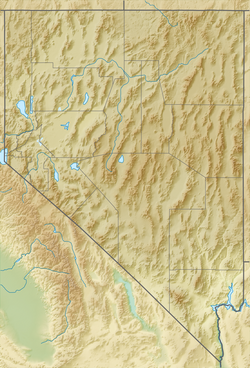| Hays Canyon Range | |
|---|---|
| Highest point | |
| Peak | Hays Canyon Peak |
| Elevation | 7920+ ft (2414+ m) [1] |
| Coordinates | 41°16′35″N119°56′07″W / 41.276471°N 119.935416°W |
| Dimensions | |
| Length | 40 mi (64 km)N-S |
| Width | 10 mi (16 km) |
| Geography | |
| Country | United States |
| State | Nevada |
| Region(s) | Black Rock Desert region (Great Basin) |
| County | Washoe County |
| Settlement | Cedarville, CA |
| Borders on | Surprise Valley & Warner Mtns-W Black Rock Desert-E Buffalo Hills & Granite Range-SE Middle Alkali Lake-W |
| Topo map | USGS Hays Canyon |
The Hays Canyon Range is a mountain range in northwest Washoe County, Nevada, [2] adjacent the California border. The Surprise Valley with its alkali lakes and the Warner Mountains lie to the west.
